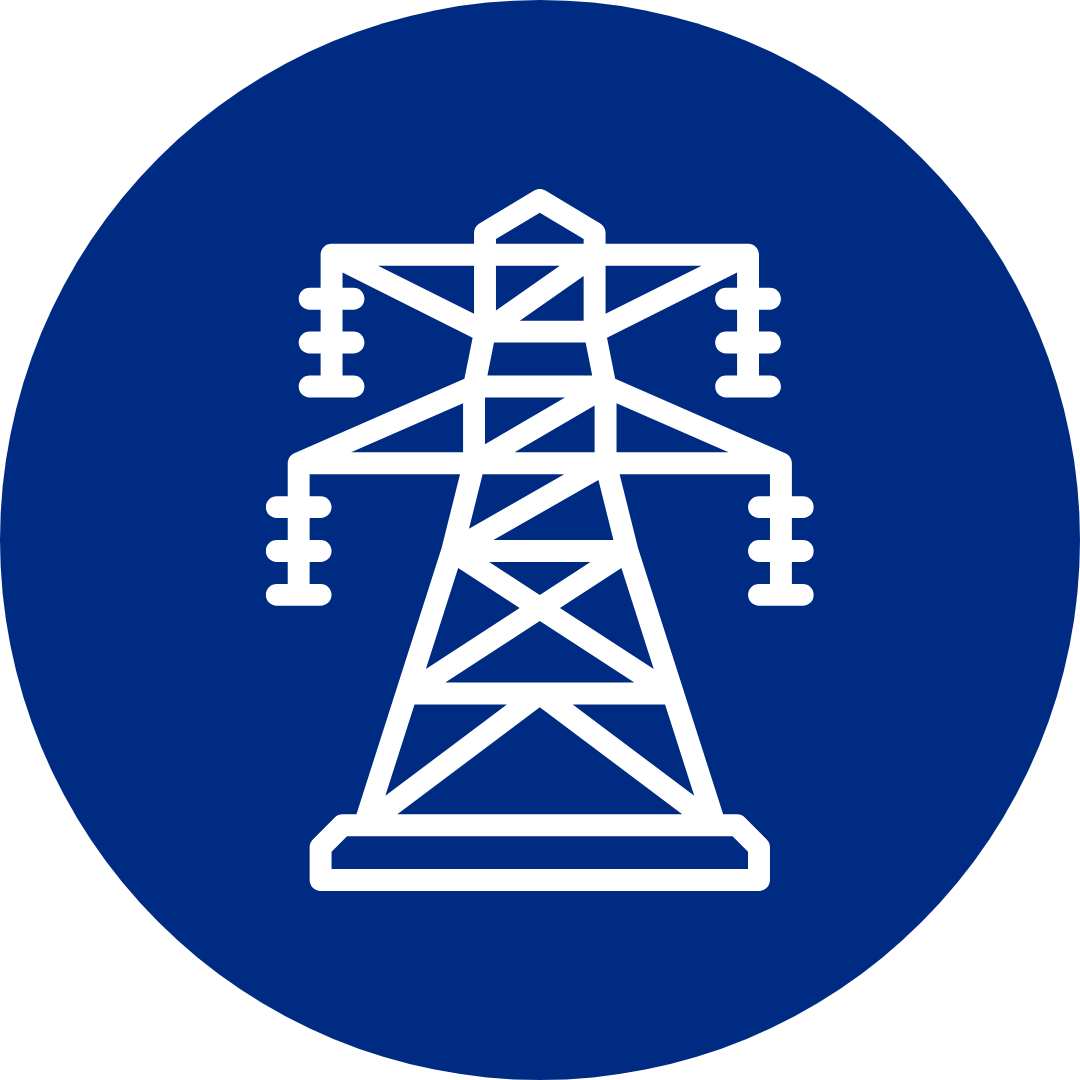Choosing the right cable is essential for any electrical project, but many people struggle to decide between PVC and XLPE cables. The main differences between PVC and XLPE cables come down to temperature resistance, safety, and best use cases, which can affect the performance and lifespan of your installation. Understanding which cable is more suitable for a specific environment helps protect equipment and ensures long-term efficiency.
PVC cables are commonly used in homes and areas where cost and flexibility matter most. XLPE cables, on the other hand, are a better fit for demanding industrial jobs, especially where higher temperatures or harsh conditions are an issue. Knowing these differences can help prevent problems like overheating or damage in the future.
Key Takeaways
PVC and XLPE cables have key differences in temperature resistance and safety.
PVC suits household and low-voltage jobs; XLPE is best for tough or high-voltage environments.
Picking the right cable extends system life and improves safety.
What Are PVC and XLPE Cables?
PVC and XLPE cables are two of the most common types of electrical cables used today. Both play an important role in delivering power safely and efficiently.
PVC insulated cable uses Polyvinyl Chloride as its primary insulation material. This material is flexible, cost-effective, and easy to work with. PVC cable is popular in low-voltage and indoor electrical installations.
XLPE cable is insulated with Cross-Linked Polyethylene (XLPE). The cross-linking process improves the properties of the insulation. XLPE insulation gives the cable better heat resistance, durability, and chemical resistance than PVC.
Feature | PVC Cable | XLPE Cable |
Insulation Material | Polyvinyl Chloride (PVC) | Cross-Linked Polyethylene (XLPE) |
Flexibility | High | Moderate |
Voltage Range | Mostly Low | Low, Medium, and High |
Cost | Lower | Higher |
PVC insulated cables are commonly chosen for household wiring, lighting, and fixed wiring in buildings. They are suitable where the temperature is not very high and where the risk of chemical exposure is minimal.
XLPE cables, on the other hand, are designed for more demanding environments. Their insulation withstands higher temperatures and voltage. This makes them a good choice for industrial applications, underground cabling, and areas needing extra durability.
In summary, while both cables serve to insulate and protect conductors, they differ in material properties and best use cases.
How PVC and XLPE Cables Differ in Temperature Resistance
PVC and XLPE cables handle heat very differently. One of the main differences is their maximum operating temperature.
Cable Type | Maximum Temperature |
PVC | 70°C |
XLPE | 90°C |
PVC (Polyvinyl Chloride) insulation softens and can break down at lower temperatures. It is best used in environments where heat levels are controlled or low. When exposed to high temperatures, PVC cables may lose strength and flexibility more quickly.
XLPE (Cross-linked Polyethylene) insulation can handle much higher temperatures. Its cross-linked structure lets it keep its strength, shape, and flexibility, even in hotter environments. This makes XLPE a better option for places where cables may face higher loads or ambient heat.
PVC cables are more likely to release toxic fumes if they burn, especially at high temperatures. XLPE, while not completely free of risk, does not give off as many hazardous gases under high heat. This can be important in buildings where fire safety matters.
When choosing a cable based on heat resistance, it is clear that XLPE performs better in challenging conditions. PVC is still suitable for standard indoor use or areas with less heat exposure.
The higher thermal limit of XLPE cables supports longer life and better reliability when electrical loads cause extra warmth. For outdoor or industrial jobs where heat is common, XLPE is often the safer and more durable choice.
Electrical Performance: PVC vs XLPE Cables
PVC and XLPE are both popular materials for insulated cables, but their electrical properties are quite different.
Voltage Rating:
XLPE cables can handle much higher voltages than PVC cables. This is because XLPE’s cross-linked structure improves its resistance to electrical stress, making it suitable for high-voltage and heavy-duty applications. PVC works well in low to medium voltage environments.
Current-Carrying Capacity:
XLPE cables often have a higher current-carrying capacity. The insulation in XLPE does not soften or lose its properties at higher temperatures, allowing it to safely manage more electrical current.
Property | PVC Cables | XLPE Cables |
Max Voltage | Up to 1.1 kV | Up to 35 kV or more |
Max Operating Temp. | 70°C | 90°C to 105°C |
Current Rating | Moderate | High |
Thermal Performance:
PVC insulation starts to lose shape and strength above 70°C. XLPE insulation remains stable at much higher temperatures, typically up to 90°C and sometimes more.
Dielectric Strength:
XLPE provides better dielectric strength compared to PVC. This increases safety, especially in applications where cables are exposed to electrical surges or spikes.
In summary, the electrical performance of XLPE cables is superior in industries needing higher voltage and current, while PVC is suited to lighter duties with lower electrical demands. Both materials effectively insulate cables, but their uses differ based on the environment and requirements.
Mechanical Strength and Durability of PVC and XLPE Cables
Mechanical strength and durability are key factors when choosing between PVC insulated cables and XLPE insulated cables.
XLPE insulated cables are known for their superior mechanical strength. The cross-linking process in XLPE (cross-linked polyethylene) creates strong bonds between molecules. This gives the cable higher resistance to physical stress, impact, and abrasion compared to PVC.
PVC insulated cables provide good mechanical strength but are generally less robust than XLPE types. PVC is less resilient when exposed to sharp bends, heavy compression, or external mechanical damage over time.
Key factors for durability:
Temperature resistance: XLPE cables can tolerate continuous temperatures up to 90°C, while PVC cables usually handle up to 70°C.
Chemical resistance: XLPE is more resistant to oil, chemicals, and most solvents. PVC offers some resistance but can degrade over time in harsh environments.
Environmental factors: XLPE cables resist UV and moisture better, making them ideal for outdoor or underground use. PVC is more suited for indoor or low-stress environments.
Property | PVC Insulated Cables | XLPE Insulated Cables |
Tensile Strength | Moderate | High |
Impact Resistance | Good | Excellent |
Flexibility | High | Moderate |
Abrasion Resistance | Moderate | High |
Lifespan in Harsh Environments | Lower | Higher |
In demanding settings, such as industrial sites or places with frequent movement and vibration, XLPE insulated cable outperforms PVC in maintaining insulation and structural integrity. For lighter, less exposed applications, PVC can be a cost-effective and adequate choice.
Fire Safety: How PVC and XLPE Cables Compare
Fire safety is a key factor when choosing between PVC and XLPE cables. Each material behaves differently in fire conditions.
PVC cables can catch fire more easily than XLPE. When exposed to high heat, PVC may release dense smoke and toxic gases, including hydrochloric acid fumes. These fumes can be harmful to people and can also damage equipment.
XLPE cables are made through a cross-linking process. This process gives them better fire-resistant properties compared to PVC. XLPE insulation can also handle higher temperatures during emergencies. For example, it can withstand conductor temperatures up to 250ºC for one second in short circuit conditions, while PVC can handle up to 160ºC.
The table below compares their fire-related properties:
Property | PVC Cable | XLPE Cable |
Maximum Temp (Short Circuit, 1 sec) | Up to 160ºC | Up to 250ºC |
Smoke Generation | High | Lower |
Toxic Gas Release | High | Lower |
Fire Resistance | Standard | Better |
In environments where fire safety is critical, such as underground stations or hospitals, XLPE is often chosen. Its lower smoke and gas production helps protect people and sensitive equipment.
PVC is still common in areas where cost and flexibility matter more than fire safety. However, for spaces that need higher protection, XLPE is usually preferred.
Cost Comparison: PVC vs XLPE Cables
The cost difference between PVC and XLPE cables is a key factor in many projects. PVC cables usually have lower upfront prices, making them a budget-friendly option for general or low-voltage use. This helps them fit well in residential or cost-sensitive installations.
XLPE cables cost more than PVC because of their materials and manufacturing processes. The cross-linking in XLPE insulation adds to both durability and expense. This means higher initial costs compared to PVC.
Below is a basic cost comparison:
Cable Type | Initial Cost | Longevity | Maintenance Cost |
PVC | Low | Moderate | Low |
XLPE | Higher | High | Very Low |
While PVC saves money at the start, XLPE offers better performance over time, especially in harsh conditions or with higher voltage. Lower maintenance and longer lifespan can balance out some of the higher initial costs.
Other important factors to budget for include:
Choosing between PVC and XLPE cables depends not just on purchase price, but on the whole life cost and the needs of each application. For short-term or less demanding projects, PVC is often preferred for its lower cost. Where durability and safety are more critical, XLPE may prove to be more economical over the long run.
Best Applications for PVC Power Cables
PVC power cables are widely used because they are affordable, easy to install, and flexible. This makes them a popular choice in many everyday electrical systems.
They work best in low-voltage and residential settings, such as:
Internal wiring in homes and offices
Power supply for appliances
Lighting circuits
Conduit wiring in commercial buildings
Key Advantages of PVC Cables:
Cost-effective for large projects
Good electrical insulation
Resistant to moisture and chemicals in controlled environments
It is important to note that PVC cables are most suited for dry, indoor locations where exposure to high temperatures or mechanical stress is limited. Their temperature range is usually up to 70°C, making them ideal for standard use inside buildings.
The table below highlights a few typical application scenarios:
Application | Why Use PVC Cables? |
Residential wiring | Flexible, low cost |
Commercial light circuits | Easy to install, reliable |
Wiring inside equipment | Compact size, ease of handling |
However, PVC is less suitable for places with frequent fire risks, intense heat, or harsh weather. In these cases, other cable types should be considered.
Where to Use XLPE Cables
XLPE (Cross-Linked Polyethylene) cables are designed for environments that demand higher performance and safety.
They handle higher voltages and can operate at temperatures up to 90°C continuously, and up to 250°C briefly during short circuits. This makes them suitable for applications where heat resistance and reliability are crucial.
Common uses for XLPE cables include:
Power transmission and distribution networks
Industrial installations with heavy machinery
Underground and underwater cable systems
Renewable energy plants (solar and wind farms)
Buildings needing high electrical load capacity
Unlike PVC cables, XLPE cables are less affected by chemicals, moisture, and ultraviolet light. As a result, they are often chosen for outdoor or buried installations.
In locations with strict safety requirements, such as hospitals, airports, and data centres, XLPE insulation offers added protection due to its stronger resistance to electrical faults and overloads.
Feature | XLPE Cable Advantage |
Maximum Operating Temp | Up to 90°C |
Short Circuit Temp | Up to 250°C |
Chemical Resistance | High |
Suitable for Outdoors | Yes |
Mechanical Strength | Excellent |
XLPE cables provide a robust option for projects where long lifespan, efficiency, and safety are priorities. They are less likely to degrade in tough conditions and can support higher current loads compared to many standard cables.
Alarm Cable
Arctic Grade Cable
Armoured Cable
Audio & Speaker Cable
Auto Cable
Bare Copper
Belden Equivalent Cable
Co-axial Cable
Data Cable
DC Telecom Cable
Defence Standard Cable
Emergency Lighting & Fire Detection Cable
EV Cable
Festoon
![Loose Tube Fibre Cross Section]()
Fixed Wiring PVC & LSOH Cable
Flatform
Flexible Control Cable
Flexible PVC Cable
Flexible Rubber Cable
General Wiring Cable PVC & LSOH
High Temperature Cable
High Voltage Cable
![5308 p1 t2 cat Cross Section]()
LSOH Flexible Cable
Medium Voltage Cable
NYY & N2XH Cable
Protected Wiring Cable
Silicone Cable
Solar Cable
Split Concentric Cable
Spiral Cable
Temporary Power Cable
Tri-Rated Cable
Welding Cable
Alarm Cable
Arctic Grade Cable
Armoured Cable
Audio & Speaker Cable
Auto Cable
Bare Copper
Belden Equivalent Cable
Co-axial Cable
Data Cable
DC Telecom Cable
Defence Standard Cable
Emergency Lighting & Fire Detection Cable
EV Cable
Festoon
![Loose Tube Fibre Cross Section]()
Fixed Wiring PVC & LSOH Cable
Flatform
Flexible Control Cable
Flexible PVC Cable
Flexible Rubber Cable
General Wiring Cable PVC & LSOH
High Temperature Cable
High Voltage Cable
![5308 p1 t2 cat Cross Section]()
LSOH Flexible Cable
Medium Voltage Cable
NYY & N2XH Cable
PAS - BS5308 Instrumentation Cable
Protected Wiring Cable
RS-232 Cable
RS-485 Cable
Silicone Cable
Solar Cable
Split Concentric Cable
Spiral Cable
Telephone Cable
Traffic Signal Cables
Temporary Power Cable
Tri-Rated Cable
Welding Cable
Airports
Automation & Process Control
![Automotive]()
Building & Construction
Communication & Telecommunication
Data Centres
Defence
![DNO 1]()
E-Mobility
Food & Beverage
Marine & Offshore
Mining, Drilling & Tunnelling
OEMs
Oil, Gas & Petrochemical
Rail & Metro
Renewable Energy
Switchgear
Power
Water Treatment













































